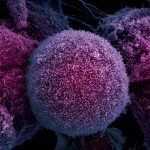Link to Pubmed [PMID] – 21546543
Genetics 2011 Aug;188(4):787-97
Trex2 is a 3′ → 5′ exonuclease that removes 3′-mismatched sequences in a biochemical assay; however, its biological function remains unclear. To address biology we previously generated trex2(null) mouse embryonic stem (ES) cells and expressed in these cells wild-type human TREX2 cDNA (Trex2(hTX2)) or cDNA with a single-amino-acid change in the catalytic domain (Trex2(H188A)) or in the DNA-binding domain (Trex2(R167A)). We found the trex2(null) and Trex2(H188A) cells exhibited spontaneous broken chromosomes and trex2(null) cells exhibited spontaneous chromosomal rearrangements. We also found ectopically expressed human TREX2 was active at the 3′ ends of I-SceI-induced chromosomal double-strand breaks (DSBs). Therefore, we hypothesized Trex2 participates in DNA DSB repair by modifying 3′ ends. This may be especially important for ends with damaged nucleotides. Here we present data that are unexpected and prompt a new model. We found Trex2-altered cells (null, H188A, and R167A) were not hypersensitive to camptothecin, a type-1 topoisomerase inhibitor that induces DSBs at replication forks. In addition, Trex2-altered cells were not hypersensitive to γ-radiation, an agent that causes DSBs throughout the cell cycle. This observation held true even in cells compromised for one of the two major DSB repair pathways: homology-directed repair (HDR) or nonhomologous end joining (NHEJ). Trex2 deletion also enhanced repair of an I-SceI-induced DSB by both HDR and NHEJ without affecting pathway choice. Interestingly, however, trex2(null) cells exhibited reduced spontaneous sister chromatid exchanges (SCEs) but this was not due to a defect in HDR-mediated crossing over. Therefore, reduced spontaneous SCE could be a manifestation of the same defect that caused spontaneous broken chromosomes and spontaneous chromosomal rearrangements. These unexpected data suggest Trex2 does not enable DSB repair and prompt a new model that posits Trex2 suppresses the formation of broken chromosomes.

